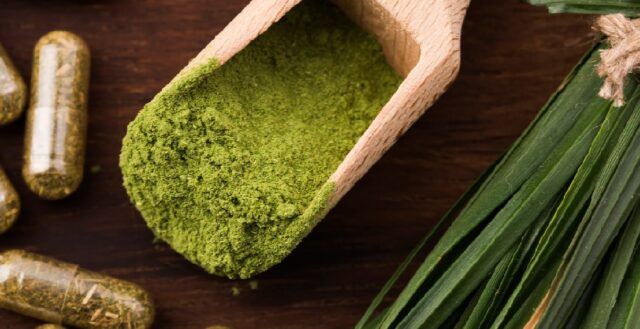Most people know barley as a grain that’s an ingredient in beer and some breads. But before a barley plant reaches the grain stage it’s a green grass that nutrition-minded people use in drinks or smoothies. Barley grass is so loaded with nutrients that it’s known as a supergreen, or superfood.
Health Benefits of Barley Grass
Barley grain is a nutritional food, but it’s at the grass stage where this plant offers an amazing variety of nutrients. The grass is rich in the B vitamins, as well as vitamins A, C, and E. It also contains zinc, magnesium, potassium, copper, and antioxidants, and amino acids. So it’s no wonder that barley grass delivers several health benefits.
Protection From UV Radiation
Ultraviolet, or UV, radiation is the harmful radiation given off by the sun. While a little UV radiation is beneficial to people, too much exposure prematurely ages skin and can cause liver spots, dry skin, and wrinkles. UV radiation is also a cause of the skin cancer melanoma. Barley grass is a good source of superoxide dismutase, or SOD — an antioxidant enzyme with attributes that protect cells from the negative effects of UV radiation.
Prevents Osteoporosis
Osteoporosis is a bone disease that limits the creation of bone growth, resulting in a decrease in bone density and strength. Barley grass contains copper and phosphorus, which are both necessary for good bone growth. More importantly, barley grass is very high in bone-building calcium. In fact, barley grass contains more than ten times the amount of calcium found in milk!
Slows Aging
Saponarin is a very potent antioxidant and is present only in barley grass. Antioxidants counteract the negative effects of cell-damaging free radicals — the unstable molecules processed foods, toxins, and alcohol that damage the DNA in cells. These free radicals contribute to the causes of aging. In addition to saponarin, SOD — the barley grass antioxidant that provides protection from UV radiation — is a key free radical fighter that is crucial to slowing down the aging process.
Improves Digestive Health
Barley grass has a high HCL, or organic sodium, content. HCL is a necessary component in the stomach’s production of the food-digesting chemical hydrochloric acid. Insufficient hydrochloric acid leads to toxin buildup and indigestible food material. Being a green plant, barley grass has a very high chlorophyll content. Chlorophyll is a natural cleanser that combats the bad effects of consuming processed foods. Barley grass is a good source of fiber that can help improve gut health by feeding the “good” bacteria that naturally lives in your gut. This aids in digestion and keeps your intestines healthy.
Supports the Immune System
The immune system is the body’s defense system to fight infections, bacteria, and other harmful substances. Barley grass is rich in vitamin C — it has many times the level of this vitamin than oranges. Vitamin C is a nutrient that we all know is important to good immune system health. Barley grass also contains copper, zinc, and selenium, micronutrients important for red blood cell production and the elimination of accumulated toxins.
Barley Grass Supplements
Barley grass doesn’t make for a particular tasty dinner dish — what grass is? So nutritionally-minded people usually take it as a supplement. A supplement is a much easier way to consume the grass, and it’s a more efficient way to get its benefits as a supplement is an extract that has a higher concentration of nutrients than the whole plant itself.
You can buy barley grass supplements in the form of capsules, tablets, or powder. Barley grass powder is often the preferred way to take this supplement as it’s easy to measure out the exact dosage you want. The powder can be mixed in water, but for a better-tasting drink, it’s best to mix the powder in a juice or flavored drink of your choice.
How much barley grass you take per dose is up to you. A daily dose of a couple of grams (2000 mg) is common, though people take as little as half a gram (500 mg) up to 7 grams (7000 mg) or more. Side effects of barley grass are almost unheard of (it’s just a type of grass, after all), so there shouldn’t be any fear of taking too much. As with any supplement that’s new to your body, it does make sense though to start with a low dose and work your way up to a higher level over a number of days.
Lately, all the health rage has been about going gluten-free. Gluten is a protein that’s present in most grains, including wheat, rye, and barley. But while the barley grain contains gluten, the grass form doesn’t. The gluten forms only after the plant has transitioned from the grass stage to the grain stage. So if you’re concerned about gluten, fear not — barley grass is free of any gluten!









